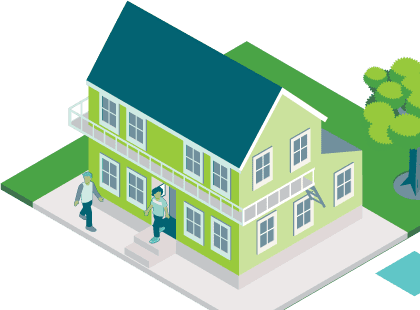As we edge closer to the start of spring, it’s time to make sure you’ve ticked off any winter maintenance requirements.
Landlords and tenants both have responsibilities around maintenance, so make sure you know what you’re responsible for.
Inside the house:
If there is a working fireplace, the landlord is responsible for cleaning the chimney. Chimneys should be swept and checked annually to make sure they’re safe. Your insurance policy may not cover you if this isn’t done. The tenant is responsible for day-to-day cleaning of the fireplace, such as sweeping the ashes from the hearth.
Landlords are also responsible for servicing any ducted heating and ventilation systems. The tenant should regularly ventilate the home by opening doors and windows to allow the fresh air in (even in winter). This helps maintain healthy air inside the house and reduces the amount of moisture - making it easier to heat, and less likely to grow mould.
It’s also a good time to check if there any unflued gas heaters in the house. These release moisture and pollutants into the inside air. Landlords may choose to ban the use of portable LPG cabinet heaters in the tenancy agreement.
Around the property:
The landlord is usually responsible for outside tasks such as house-washing, gutter-cleaning and tree pruning. If any trees or plants are dangerous (eg, they were damaged in a storm or are growing towards power lines), the landlord must make them safe.
Tenants can do outdoor cleaning tasks like window cleaning (if the windows are easily accessible) as part of their responsibility to keep the property reasonably clean and tidy.
It is a good idea to talk about this at the start of the tenancy and note it in the tenancy agreement to avoid misunderstandings.
Don’t forget:
Landlords need to give at least 24 hours’ notice before entering the tenants’ home to carry out urgent repairs or maintenance. You don’t need to give notice to go onto the property, but you do need to make sure you’re not interfering with the tenant’s peace and privacy.
Back to News